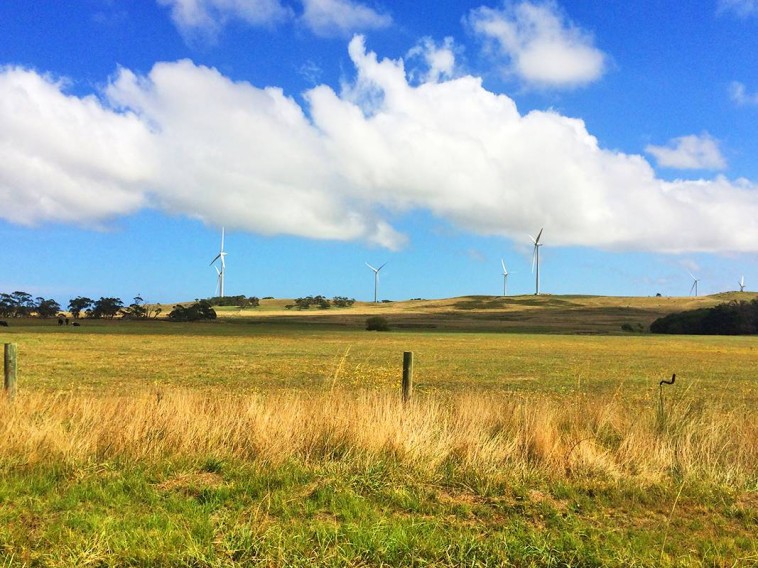A lot of work goes into finding the right site for a potential wind farm. There are many factors to consider, such as:
- The availability of wind
- Access to the electricity grid
- Current land use
- Environmental impacts
The energy content of wind is directly proportional to the swept area of the rotor, the air density and the cube of wind velocity. Simply put, if the wind speed doubles, the energy in the wind increases 8 times.
i.e. Power = [constant] x [air density] x [rotor swept area] x [wind velocity]3
Modern wind turbines have been shown to convert approximately 40% of the kinetic energy in the wind into electrical energy. This is known as the “energy efficiency” of the wind turbine (not to be confused with the capacity factor).
Modern wind turbines make relatively little noise. The level of sound can vary considerably depending on the shape of the land, the position of the listener and the speed of the wind. In most instances, it is possible to carry on a conversation at the base of a wind turbine without having to raise your voice.
The sound that a modern wind turbine produces is most commonly described as a cyclic whooshing or swishing sound.
Please visit the Clean Energy Council website
HEREThe owner of the wind farm owns the turbines and is responsible for their safe operation and maintenance.
What happens to the turbines at the end of the project?
The owner of the wind farm is responsible for removing the turbines at the end of their working life.
There is no conclusive evidence to suggest that rural land is devalued due to the existence of a wind farm.
In 2009, the NSW Valuer General commissioned an independent study into the impact of wind farms on surrounding land values in Australia (Click here to view). The main finding was that wind farms do not appear to have negatively affected property values in most cases. The report also recommended that further analysis be commissioned in time to capture additional data.
Yes, some wind farms have had a positive effect on tourism. For example, Pacific Hydro’s Codrington Wind Farm in southwest Victoria attracts 50,000 visitors each year through its successful tour operator business.
In rural areas, electricity-related fires are most likely to result from damage to overhead power lines by falling branches. As all high-voltage connections for turbines around the site will be run underground, the risk of electricity-related fire is extremely low.
Each turbine is also fitted with a comprehensive lightning protection system that safely transfers any high voltages or currents directly to the earth without affecting turbine performance. However, any electrical facility has the potential to catch fire. The fire control methods for wind farms are the same as those used for all other high-voltage electrical assets.
If you have a concern or complaint, please contact the Bald Hills Wind Farm using any one of the methods below:
In writing:
Bald Hills Wind Farm Pty Ltd
Suite 1, Level 1, 150 Collins Street
Melbourne VIC 3000
By Phone 1800 027 689
By Email: info@baldhillswindfarm.com.au
Click here to review the Bald Hills Wind Farm Community Complaint Evaluation and Response Procedure.
If your complaint is regarding an issue with noise, please include the following information:
- The time and duration of the complaint incidence;
- A description of the type of noise heard, including the direction from which the noise came and the origin of the noise if able to be determined;
- Whether the noise was heard indoors or outdoors; and
- Details of prevailing weather conditions, i.e. wind (strong, medium light), wind direction, storms or the like.

